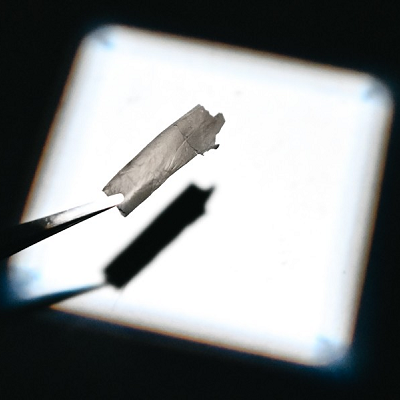Researchers from Poznan University of Technology in Poznan, Poland, have developed a new method for the simultaneous detection of cadmium and lead in water samples. Their study, published in Spectrochimica Acta Part B: Atomic Spectroscopy, outlines the use of a discrete sample introduction system (DSIS) for direct micro-volume suspension injection.
The team used multiwalled carbon nanotubes (MWCNTs) pre-concentrated on oxidized MWCNTs to microwave induced plasma optical emission spectrometry (DMSPE–DSIS–MIP OES) to detect the presence of cadmium and lead in water samples. The researchers also tested on-axis low-volume spray chambers with flow focusing micro nebulizers in continuous mode and v-groove type pneumatic nebulizers in discontinuous mode for microliter-volume suspension introduction.
Dispersive micro solid-phase extraction–discrete sample introduction syste–microwave-induced plasma optical emission spectrometry (DMSPE–DSIS–MIP OES) involves pre-concentrating the metals on multiwalled carbon nanotubes using dispersive micro solid-phase extraction. The sample is then introduced into a microwave-induced plasma using a discrete sample introduction system. The method has high sensitivity and precision, and has been successfully applied to the analysis of real water samples.
The researchers used a univariate approach and a simplex optimization procedure to achieve optimized conditions and derive analytical figures of merit. They achieved a minimum dead volume, high nebulization, and suspension transport efficiency by using miniaturized spray chamber/v-groove pneumatic nebulizer interfaces for 10 μL suspension injection in discontinuous mode (at 0.5 mL min−1 pump speed).
The DMSPE–DSIS–MIP OES method was characterized by determining the limits of detection (0.7 and 0.1 ng mL−1 for Cd and Pb, respectively) and precision, which ranged from 6% to 8%. Quantitative data obtained for water reference materials (ERM-CA011b and SRM 1643e) were in good agreement, according to the t-test, for a confidence level of 95%, with the corresponding reference values, proving the potential of this analysis system for trace analysis via MIP OES.
The proposed method was successfully applied for the determination of cadmium and lead in water real samples. The MIP OES technique has some unique features, such as high excitation efficiency for metal and non-metal elements, higher resistance to excess hydrogen, capabilities for simultaneous determination of elements, low cost for instrumentation and maintenance, and convenience of operation.
This study is significant because liquid sample introduction by means of pneumatic nebulization is the most common technique in ICP and MIP spectrometries. However, the sample transport has been one of the key factors limiting sensitivity in those techniques. The aerosol produced by the nebulizer/spray chamber assembly should be fine to be efficiently transported and finally atomized/excited/ionized by the plasma discharge. With that said, introducing large amounts of sample aerosol into the plasma can lead to a reduction in plasma temperature, incomplete atomization, and increased matrix-induced spectroscopic and non-spectroscopic interference effects.
The new DSIS method developed by the researchers offers an effective solution to these challenges and could pave the way for more efficient and accurate detection of trace elements in water samples.
Read the original article on Spectroscopy.







